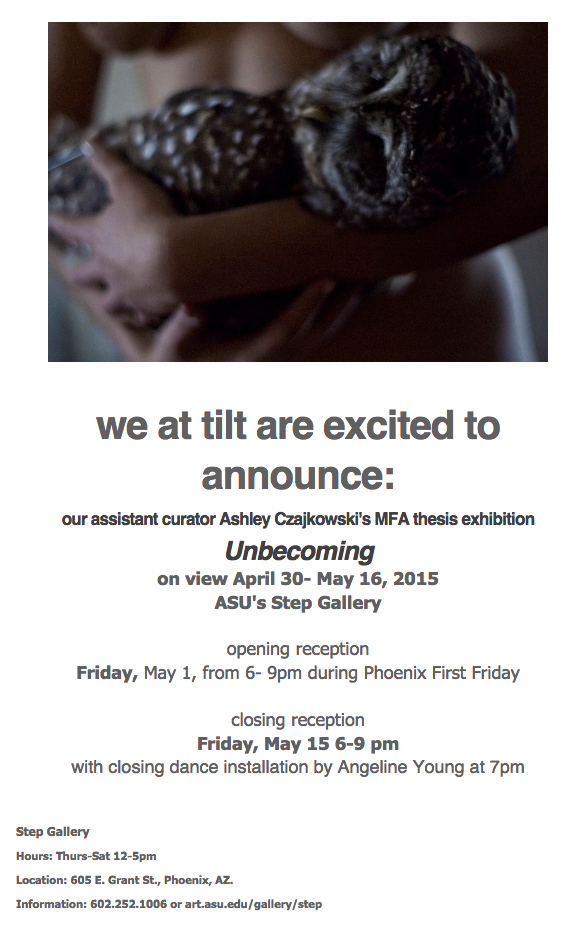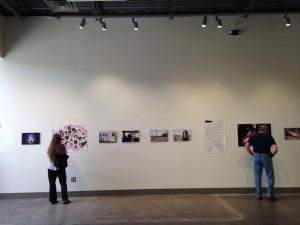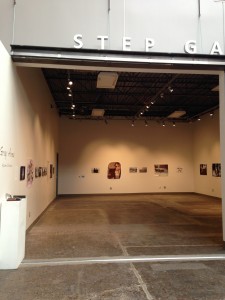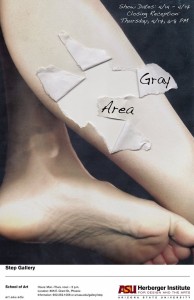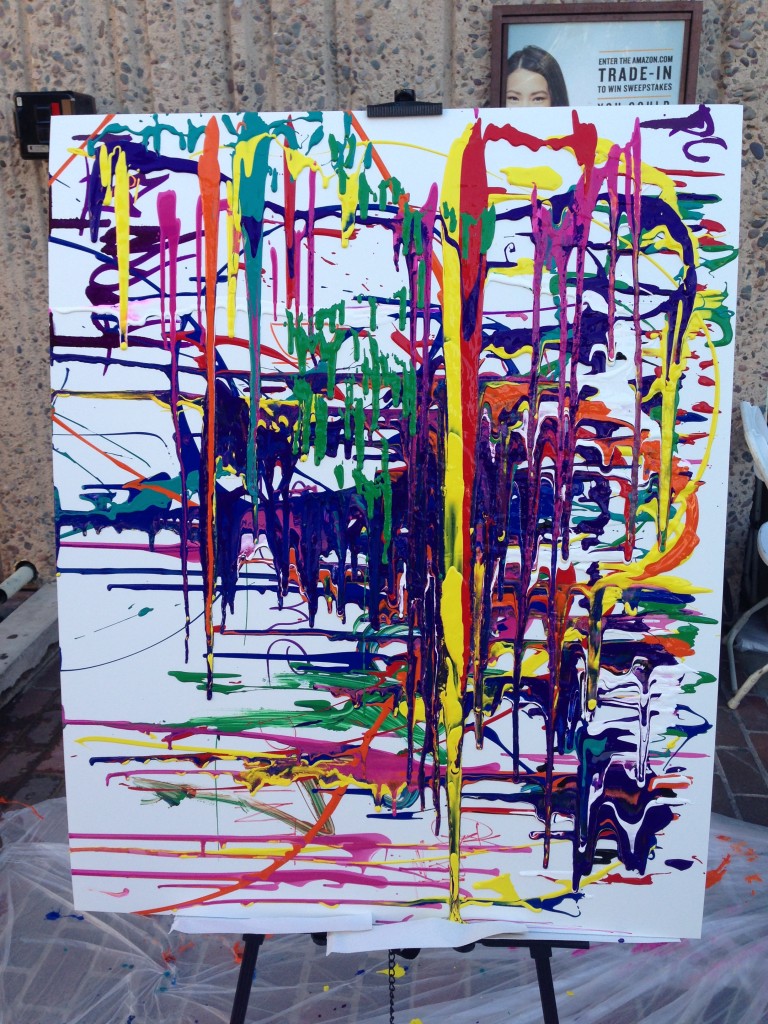Step Gallery
Megan Richmond: Gray Area at Step Gallery
I drove to downtown Phoenix tonight for a friend’s art opening called Gray Area at Step Gallery. A BFA honor’s thesis exhibition centralized around abuse by Haylee Schiavo. I was taken aback walking into a space where so much celebration as well as healing was taking place.
Haylee photographed a young woman named Sally who became the central figure and story in the images. This woman had been through a lot. I could tell this from the tone in the artist statement, but Sally was there; standing and confronting pictures in the gallery. This was her life to be told in photographs, so I could tell she was anxious. She looked at the photographs for what seemed like several minutes at a time and even asked Haylee to give her a few more minutes before taking them down.
I knew photographs had power, but seeing someone react to them as other photographers would was something that was out of the ordinary for me. This made me look closer at the work and how the photographs spoke to one another.
Scans of old family photos mixed with portraiture of Sally through Schiavo’s perspective filled the white walls with something more. This was a way to understand and process abuse by taking photographs on a journey that has affected them both…but it has also brought them together.
ASU’s Art Fest: A Success
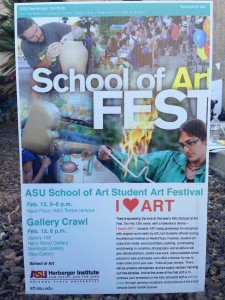 On February 12, the ASU Tempe campus played host to the annual ASU School of Art: Student Art Fest at the Neeb Plaza. The promotional poster was inviting—”Tickle all your senses,” it read—a colorful display of art students practicing their crafts with utter concentration. I arrived to Neeb Plaza, excited to take a look at what the School of Art has been doing this semester, and was greeted by a Volkswagen Beetle, charmingly vandalized by other passersby. It was the perfect introduction into the art scene here at ASU. The Beetle was decorated with all sorts of designs and messages, a piece of art contributed to by any ASU student that had something to add.
On February 12, the ASU Tempe campus played host to the annual ASU School of Art: Student Art Fest at the Neeb Plaza. The promotional poster was inviting—”Tickle all your senses,” it read—a colorful display of art students practicing their crafts with utter concentration. I arrived to Neeb Plaza, excited to take a look at what the School of Art has been doing this semester, and was greeted by a Volkswagen Beetle, charmingly vandalized by other passersby. It was the perfect introduction into the art scene here at ASU. The Beetle was decorated with all sorts of designs and messages, a piece of art contributed to by any ASU student that had something to add.
Fourteen student art clubs from metal, wood and fibers, painting, printmaking and drawing to ceramics, photography and foundry presented their work at the Art Fest. The students proudly invited interested peers to sign up for club newsletters and offered samples of their work. The Wood and Fibers Club displayed elegant bracelets printed with their club logo of a tree, while the Ceramics Club provided kiln-fired bowls and painted statues, and the Printmaking Club handed out Valentine’s Day-themed postcards.
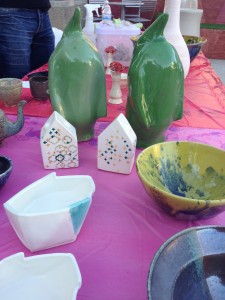 Each club had a few students demonstrating their trades. The ASU Metal Club demonstrated the process of burning simple patterns onto metal through the use of stencils. A Ceramics Club member slowly crafted a pot on the spinning wheel. The Photography Club took pictures of volunteers with a Polaroid camera and invited people to view their gallery showings at Gallery 100 and Step Gallery, just off of the ASU Tempe campus. A table was set aside for Utrecht, the student-friendly art store found at the corner of Rural and University, where they offered art advice and free student discount cards to be used for any artist’s next purchase. They also had a display board where an enterprising artist could splash a bit of paint on the increasingly messy collage.
Each club had a few students demonstrating their trades. The ASU Metal Club demonstrated the process of burning simple patterns onto metal through the use of stencils. A Ceramics Club member slowly crafted a pot on the spinning wheel. The Photography Club took pictures of volunteers with a Polaroid camera and invited people to view their gallery showings at Gallery 100 and Step Gallery, just off of the ASU Tempe campus. A table was set aside for Utrecht, the student-friendly art store found at the corner of Rural and University, where they offered art advice and free student discount cards to be used for any artist’s next purchase. They also had a display board where an enterprising artist could splash a bit of paint on the increasingly messy collage.
The Art Fest ran from 3 p.m. to 6 p.m., after which students were invited to attend a gallery crawl. Galleries attended include Gallery 100, Harry Wood Gallery, Northlight Gallery, and Step Gallery, all of which are within walking distance of the Tempe campus.
